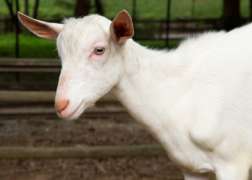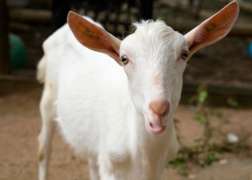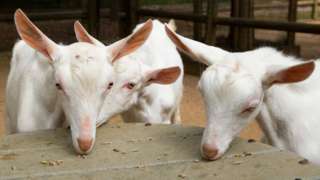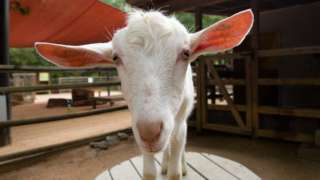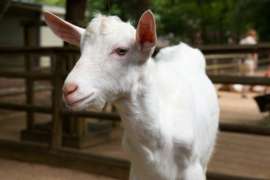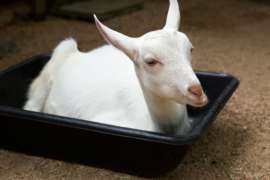Saanen Goat
Saanen Goat
Saanen goats are one of the largest and calmest of the dairy breeds. They tend to do well as family companions and in showmanship classes due to their mild temperament. Many breeders have been known to refer to them as “living marshmallows.”
Capra aegagrus hircus
Herbivore
Europe [VIEW MAP]
Urban Areas
The individual barnyard animals at Outback Station are rotated in and out of the petting zoo at various times of the day. Guests may enjoy time with the animals anytime except during the coldest or rainiest conditions, but it will always be a surprise to find which specific breeds and individual animals are there to greet them.
Photos and Videos
This breed originated in the Saanen Valley of Switzerland. In 1893, several thousand Saanen goats were taken from the valley and spread throughout Europe. Between 1904 and the 1930s, approximately 150 were imported to the U.S. from Switzerland. Saanen goats produce the most milk on average, but their milk tends to have lower butterfat content, normally around 3 percent. Because of their light coloring, these goats are susceptible to sunburn and thrive in cooler or shadier conditions.
The Saanen goat’s coat is short and fine, although a fringe over the spine and thighs is not unusual. Hair is white to creamy white in color. Saanen goats can have erect ears and straight or dished faces. A mature female stands at least 30 inches at the withers (top of the shoulder blades) and weighs 135 pounds or more. Males stand approximately 32 inches tall and weigh 160 pounds or more.
These goats live about 10 years, with sexual maturity reached at 3 to 12 months of age. Breeding season is in the fall, and the cycle of a doe lasts 17 to 23 days. Estrus lasts 12 to 48 hours. Gestation lasts 148 to 156 days and results in twins or even triplets.
Bucks smell to tell if a doe is in estrus by the behavior known as “flehmen.” In this behavior, they extend their necks and heads into the air and curl up their upper lips.
The individual barnyard animals at Outback Station are rotated in and out of the petting zoo at various times of the day. Guests may enjoy time with the animals anytime except during the coldest or rainiest conditions, but it will always be a surprise to find which specific breeds and individual animals are there to greet them.
This breed was developed in Switzerland. They are now maintained as domestic animals worldwide.
At the Zoo, we offer the goats a varied diet of Bermuda hay, browse (clippings from non-toxic plants across the Zoo), some grain and produce.

